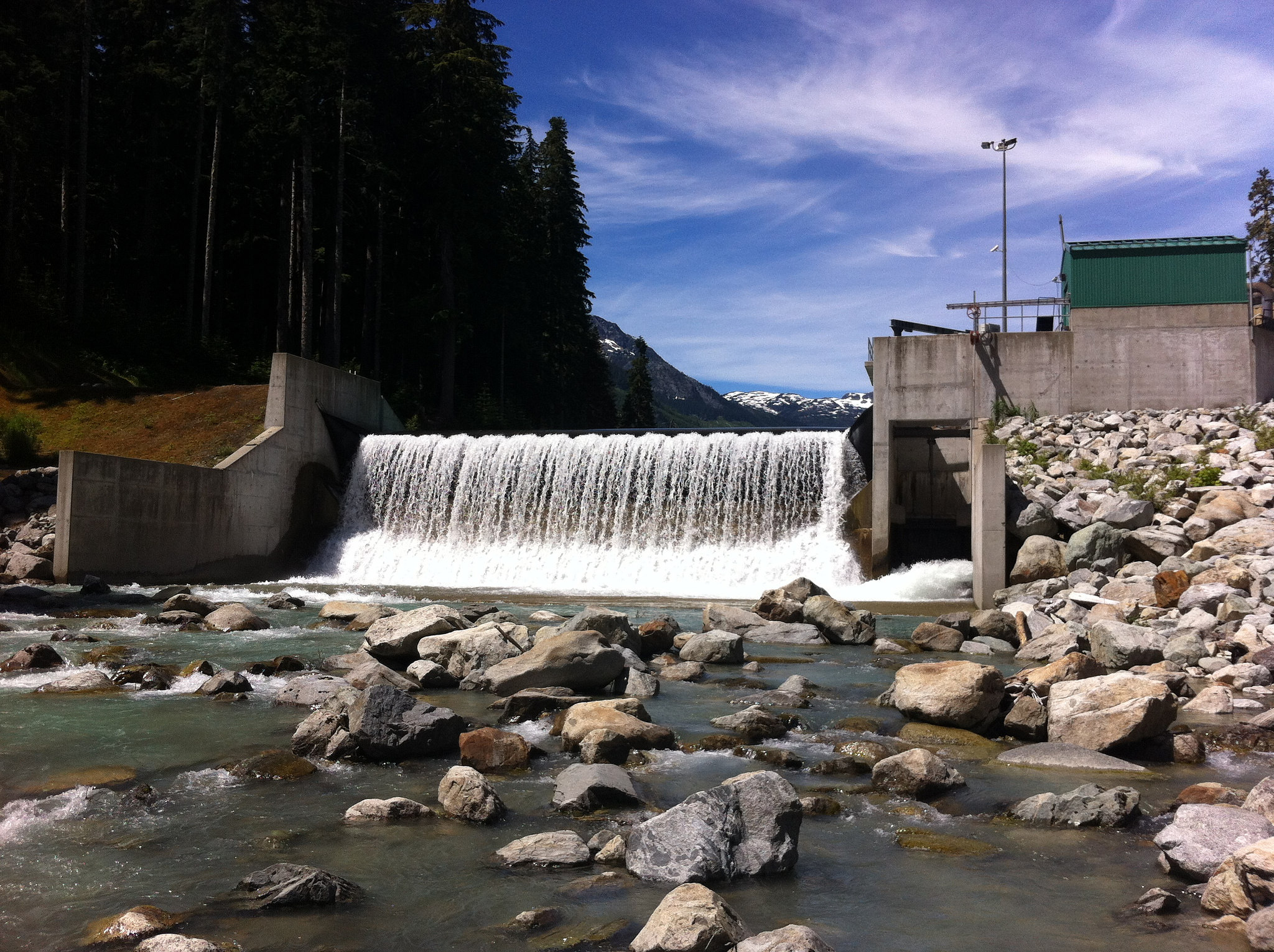Development of a GIS method to define possible locations and potential for small hydropower plants
The GIS-based procedure was developed and applied to all the tributaries to the Moldova river in order to provide an overall estimate of their hydropower potential. The research was split into the following stages:
- evaluation of the relevant hydrologic-hydraulic parameters of the catchments defining the monthly average rainfall (raster map);
- identification of the locations of existing reservoirs that are suitable for the evaluation of the HPP through GIS procedure;
- assessment of the “geodetic head” (H) for each reservoir. Three automatic GIS-based approaches were used for:
- dams with known parameters;
- dams with unknown parameters but located in the area covered by LiDAR data;
- dams with unknown parameters and located in the area covered by a 35 m resolution DTM.
- creation of a buffer around the reservoirs (points E1, E2) and identification on the orthophoto of the initial and final limit of a reservoir (points D1, D2), calculating their elevation from the DTM;
- assessment of the longitudinal average slope between the points E1 and E2;
- assessment of the “geodetic head” (H) from geometric calculations, assuming that the level of the reservoir is represented by the level at point D1;
- assessment of the HPP for each reservoir has been calculated according to the following well known equation: ;
- analysis of different HPP classes and their spatial distribution: the total reservoirs considered in the final evaluation of the study case are 1,105 for a total yearly production of energy of about 7,336 MWh.
Total cumulated HPP is about 1 274 kW.


